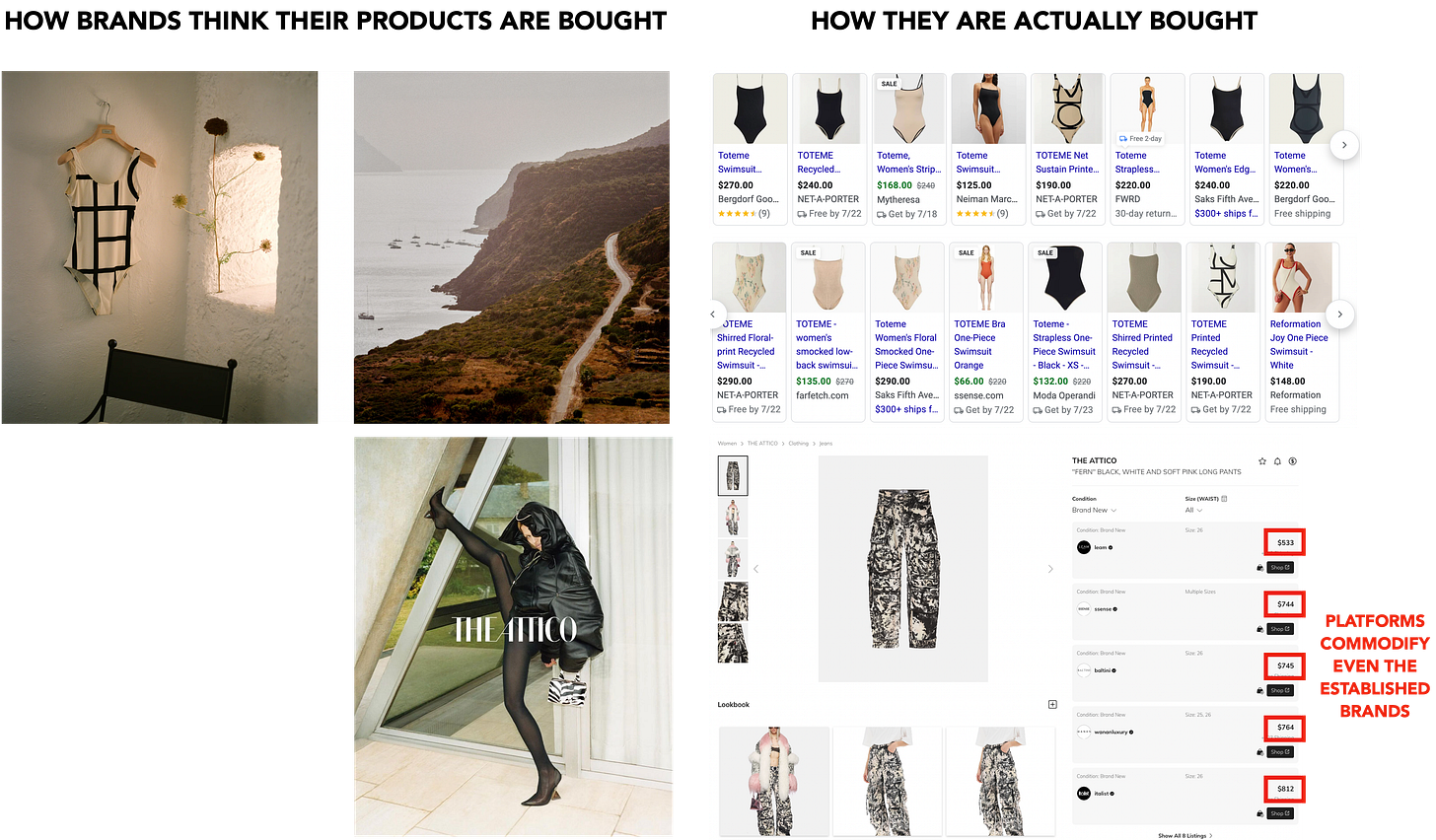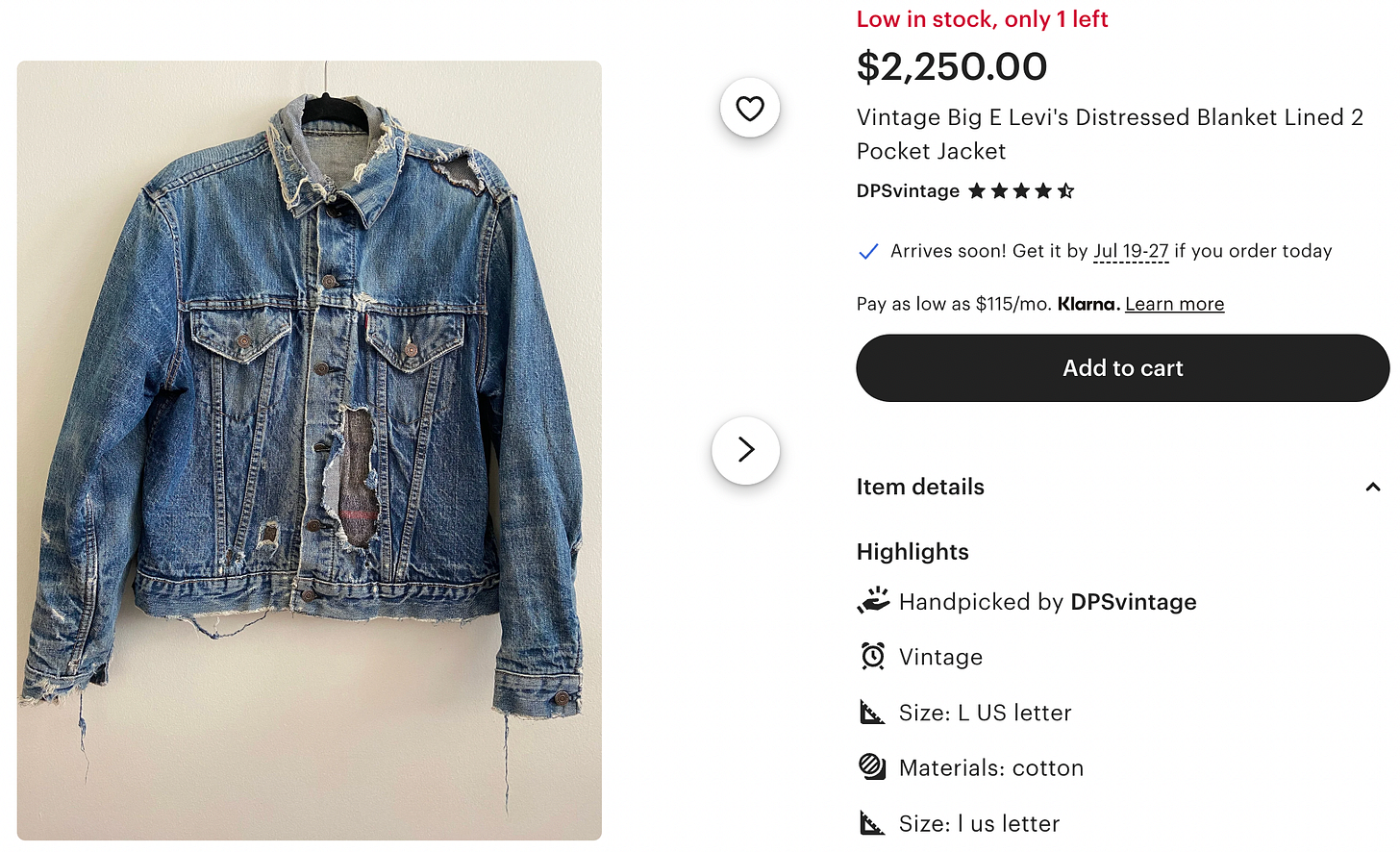Welcome to the Sociology of Business. In my last analysis, PRODUCT WARS, I explored how retail’s two opposing forces - identity and functionality - are shaping its strategy. Buy my book The Business of Aspiration and find me on Instagram, Twitter, and Threads. With one of the paid subscription options, join Paid Membership Chat, and with the free subscription, join The General Chat on The Sociology of Business WhatsApp group.

If you find yourself on Aeolian islands this summer, you have an opportunity to stop by Toteme’s “summer residency” on Filicundi. Accessible only by boat, the residency (a pop-up in the rocks?) features a selection of pieces that “come to life on the island.” The store looks serene, beautiful, and very on brand.
Why it exists is beyond me.
There is another way.
Product-led branding uses product creativity and innovation to build a brand. Moon Shoe started Nike, 1460s started Dr.Martens, 501s started Levi’s, Arizona started Birkenstock. Now-iconic products originally provided a superior innovation - durability, fit, quality, design - to offer something that no other product did (copper rivets on Levi’s 501, air cushioning on Dr Martens, ergonomically shaped sole on Birkenstocks). They were so good that they were their own advertising.
Instead of convincing people to buy something, product-led branding creates something that people want to use and identify with. It creates products that we are obsessed with.
In product-led branding, brand identity comes from association with products in action: them being used, worn, embellished, customized, repaired, and styled, over the years, by different people and subcultures, in many different ways. The more wear stories, the richer the product narrative.
Product-led branding is selling the wear.
This wear is the brand. Like product-led marketing in tech, which puts the product at the center of marketing efforts, product-led branding puts products at the center of cultural conversations.
Also like product-led marketing that uses product as the primary tool for customer acquisition, activation, and retention, product-led branding focuses on the experience
Keep reading with a 7-day free trial
Subscribe to The Sociology of Business to keep reading this post and get 7 days of free access to the full post archives.







